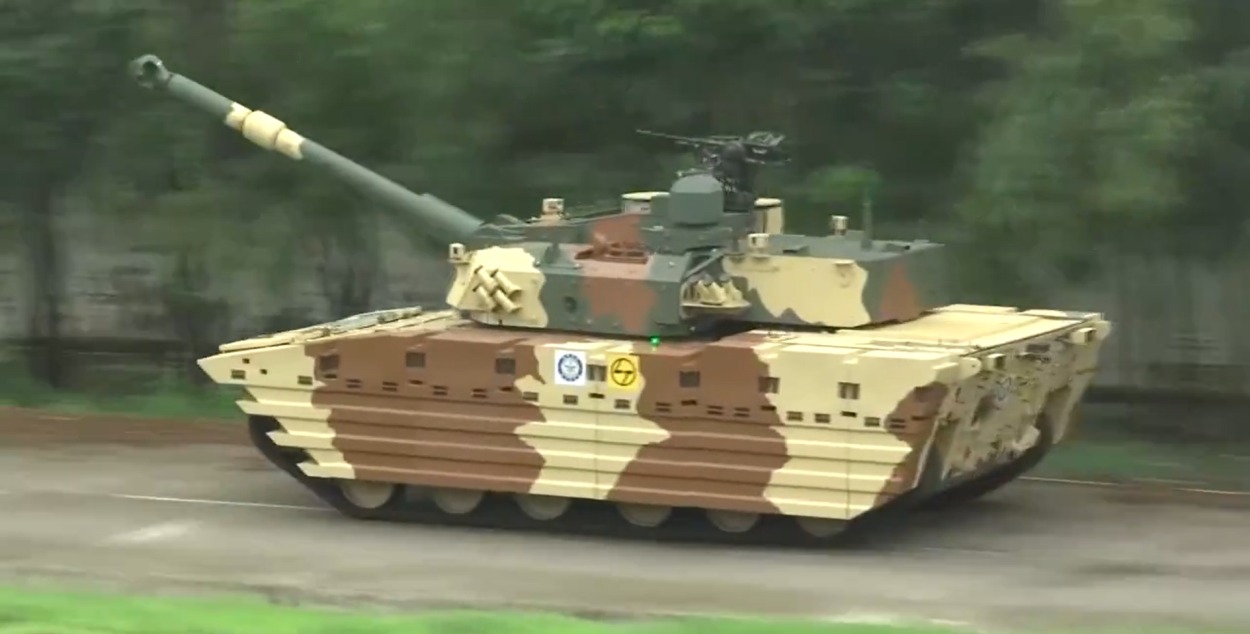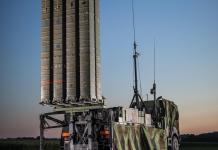Zorawar Tank: In a significant advancement for the Indian armed forces stationed along the border with China in Ladakh, the Defence Research and Development Organisation (DRDO) and private sector firm Larsen and Toubro (L&T) have unveiled the indigenous light tank, ‘Zorawar,’ on July 6.
This milestone, achieved in less than 24 months from the date of sanction, marks a pivotal development in India’s defense capabilities. The Zorawar tank has reportedly successfully completed its initial internal trials at L&T’s heavy engineering plant in Hazira, Gujarat.
During its unveiling at L&T’s heavy engineering plant, the Zorawar light tank showcased its ability to navigate a 20-degree incline with ease. The tank is engineered to handle inclines exceeding 30 degrees.
The next phase involves rigorous desert trials in coordination with the Indian Army, followed by tests in the high-altitude regions of Ladakh to evaluate its performance in challenging terrains and extreme winter conditions.
If the trials proceed as planned, the tanks could be inducted into the Indian Army as early as 2027. Further, designed with insights from the ongoing conflict between Russia and Ukraine, the Zorawar tank incorporates Unmanned Surface Vehicles (USVs) equipped with loitering munitions.
India’s Indigenous light tank ‘Zorawar’ unveiled, fastest product development by DRDO, L&T
As per DRDO chief Dr Kamat, the tank is expected to be inducted into the Indian Army by the year 2027 after all trials@DRDO_India #Zorawar pic.twitter.com/XBB8cnxqlE
— DD News (@DDNewslive) July 6, 2024
Weighing 25 tonnes, Zorawar stands out as the first tank to be designed and made ready for trials in such a remarkably short timeframe. The tank is named in honor of 19th-century Dogra General Zorawar Singh, known for his military campaigns in Ladakh and Western Tibet.
Initially, 59 Zorawar tanks will be provided to the Indian Army, setting the stage for a larger program involving 295 more of these advanced armored vehicles. The comprehensive trials are expected to be completed within the next 12 to 18 months, paving the way for their induction.
DRDO chief Dr. Samir V. Kamat expressed his pride and satisfaction with the development, stating, “It’s indeed a momentous day for all of us to see the light tank in action. In a short period of two years to two and a half years, we have not only designed this tank but made a first prototype and now the first prototype will undergo development trials over the next six months, and then we will be ready to offer it to our users for user trials. Zorawar is expected to be inducted into the Indian Army by 2027 after all trials.”
With its lightweight and amphibious capabilities, the Zorawar tank is adept at navigating steep mountain climbs and crossing rivers and other water bodies more efficiently than the heavier T-72 and T-90 tanks.
This enhanced mobility is expected to significantly bolster the operational capabilities of the Indian Army in the challenging terrains of Ladakh.
According to experts, photos that emerged on July 6 revealed several key features of the new tank. The tank appears to be equipped with a 105-mm rifled gun and a Multi-Ranging Sensor (MRS). It also includes a BEL Remote Weapon Station (RWS) and Safran Paseo optics, as well as two Anti-Tank Guided Missiles (ATGMs). The tank also features a new Light Weight Rifle (LWR), provisions for an Active Protection System (APS), and add-on modular armor blocks. It is fitted with Composite Rubber Tracks (CRT) and additional cameras for enhanced functionality.

US Engines Power India’s Zorawar Tanks
The Zorawar tank was developed under the Army’s Project Zorawar, which aims to enhance the rapid deployment and maneuverability of indigenous light tanks in high-altitude regions.
The Army plans to acquire approximately 350 light tanks in stages, forming about six regiments to bolster its mountain warfare capabilities.
During the standoff with China in Ladakh, the Army deployed its heavier T-90 and T-72 tanks, along with infantry combat vehicles. These Russian-origin tanks weigh between 40 and 50 tons, while the latest Arjun tank weighs 68.5 tons.
However, these heavy tanks are not well-suited for mountainous terrain. By employing lightweight tanks, the Army aims to enhance its effectiveness in the restricted spaces of such terrain through greater mobility and increased firepower.
The Army’s technical specifications for the Zorawar require that the tank’s dimensions facilitate transport by air, road, or water and that it be capable of operating in all weather conditions.
It must also effectively engage a range of targets, including tanks, armored vehicles, UAVs, and precision-guided munitions.
Interestingly, the Zorawar is powered by an American engine. Initially, it was set to use a German engine from MTU Germany, but a delay occurred when the German government retracted its export license, which led to nearly a year-long delay in the project.
Consequently, the DRDO opted for the American Cummins engine for the prototype phase. Despite later German clearances, DRDO chose to continue with the US-made Cummins 750 hp engine, possibly due to concerns about potential future export restrictions.
India’s Arjun Mark 1A tank project also experienced delays due to Germany’s extended timeline for providing necessary engines. In contrast, the United States has proven to be a reliable partner, leading Indian defense authorities to commit to using American Cummins engines for the Zorawar light tank project.
In addition to the Zorawar, India is also preparing to test US-made Stryker armored infantry combat vehicles in both the challenging high-altitude terrain of Ladakh and arid desert regions. This initiative is part of the Indian Army’s broader strategy to modernize its combat capabilities and replace its aging Russian-origin BMP-2 vehicles.
- Contact the author at ashishmichel(at)gmail.com
- Follow EurAsian Times on Google News




